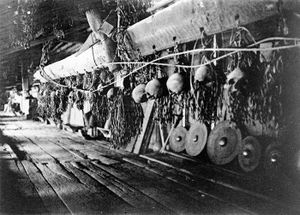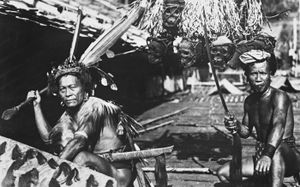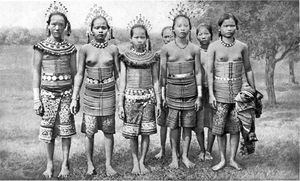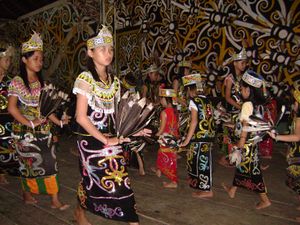داياك (شعب)
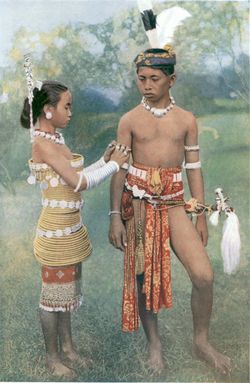 A sub-ethnic group of the Dayak people, Iban or Sea Dajak boy and girl in traditional clothing. | |
| إجمالي التعداد | |
|---|---|
| 5.9 مليون | |
| المناطق ذات التجمعات المعتبرة | |
| بورنيو: | |
| 3,219,626[1] | |
| West Kalimantan | 1,531,989 |
| Central Kalimantan | 1,029,182 |
| East Kalimantan | 351,437 |
| South Kalimantan | 80,708 |
| Jakarta | 45,385 |
| West Java | 45,233 |
| South Sulawesi | 29,254 |
| Banten | 20,028 |
| East Java | 14,741 |
| South Sumatera | 11,329 |
| unknown | |
| Sarawak | 935,935 |
| 30,000[2] | |
| اللغات | |
| لغات داياك، الإندونسية، الإنگليزية، الماليزية (ملايو ساراواك) | |
| الدين | |
| المسيحية (الأغلبية) كهارنگان و الإسلام | |
داياك (Dayak؛ /ˈdaɪ.ək/ أو Dyak أو Dayuh) هم السكان الأصليون لجزيرة بورنيو بين إندنيسيا وماليزيا.[3] وهي مصطلح فضفاض لأكثر من 200 جماعة عرقية فرعية نهرية وقاطنة للتلال، تتواجد أساساً في وسط وجنوب داخل بورنيو، كل منها بلهجتها الخاصة وعاداتها وقوانينها وأرضها وثقافتها، بالرغم من وجود عادات مميزة مشتركة. لغات داياك تُصنف كجزء من اللغات الأسترونيزية في آسيا. وقد كان الداياك إحيائيين (يعبدون الطبيعة) في معتقداتهم؛ إلا أن الكثير منهم اعتنق الإسلام ومنذ القرن 19 تحول معظمهم إلى المسيحية.[4] وهناك تشجيع للحفاظ على هذه الطائفة لاسيما من قبل الإتحاد الأوروبي الأمر الذي زاد من التوتر مع الغالبية المسلمة.
التاريخ

العرقية

صيد الرؤوس وإبرام السلام
In the past, the Dayak were feared for their ancient tradition of headhunting practices (the ritual is also known as Ngayau by the Dayaks). Among the Iban Dayaks, the origin of headhunting was believed to be meeting one of the mourning rules given by a spirit which is as follows:
- The sacred jar is not to be opened except by a warrior who has managed to obtain a head, or by a man who can present a human head, which he obtained in a fight; or by a man who has returned from a sojourn in enemy country.[5]
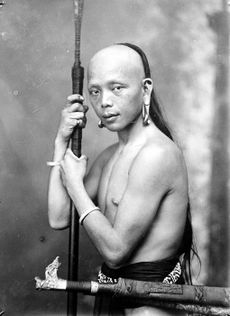

الزراعة ومدة استغلال الأرض والاقتصاد
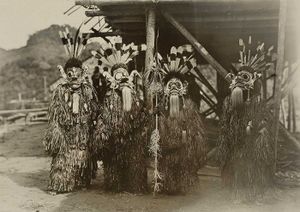
الدين والأعياد

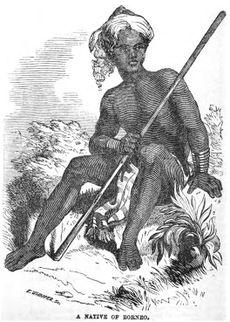
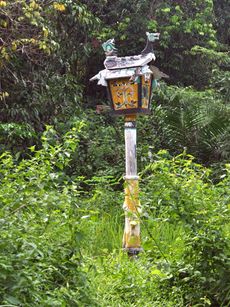
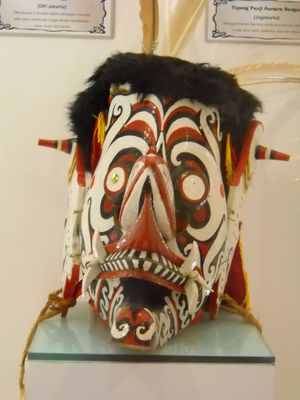

المجتمع والعادات

انظر أيضاً
- Bornean traditional tattooing
- Krio Dayak people and their language
- Iban people and their Iban language
- Meratus Dayak
- Hiram M. Hiller, Jr.
- Mina Susana Setra
الهامش
- ^ Kewarganegaraan, Suku Bangsa, Agama dan Bahasa Sehari-hari Penduduk Indonesia Hasil Sensus Penduduk 2010 [Citizenship, Ethnicity, Religion and Language Everyday, Indonesian Population Census 2010] (in Indonesian). Indonesian Central Bureau of Statistics. 2011. ISBN 978-979-064-417-5.
{{cite book}}: CS1 maint: unrecognized language (link) - ^ "East & Southeast Asia: Brunei". The World Factbook. Central Intelligence Agency. Retrieved 3 December 2016.
- ^ "Report for ISO 639 code: day". Ethnologue: Countries of the World. Archived from the original on 1 أكتوبر 2007.
{{cite web}}: Unknown parameter|deadurl=ignored (|url-status=suggested) (help) - ^ Chalmers, Ian (2006). "The Dynamics of Conversion: the Islamisation of the Dayak peoples of Central Kalimantan" (PDF). Asian Studies Association of Australia. Archived from the original (PDF) on 7 March 2014. Retrieved 3 December 2016.
- ^ "Origin of Adat Iban: Part 3". Iban Cultural Heritage. 12 June 2006. Retrieved 3 December 2016.
- ^ "A Native of Borneo". The Wesleyan Juvenile Offering: A Miscellany of Missionary Information for Young Persons. Wesleyan Missionary Society. X: 60. June 1853. Retrieved 29 February 2016.
وصلات خارجية
- Tribal peoples are fighting huge hydro-electric projects that are carving up the island's rainforest
- The J. Arthur and Edna Mouw papers at the Hoover Institution Archives focuses on the interaction of Christian missionaries with Dayak people in Borneo.
- The Airmen and the Headhunters Documentary produced by the PBS Series Secrets of the Dead
- Dayak-culture: pictures and videos
